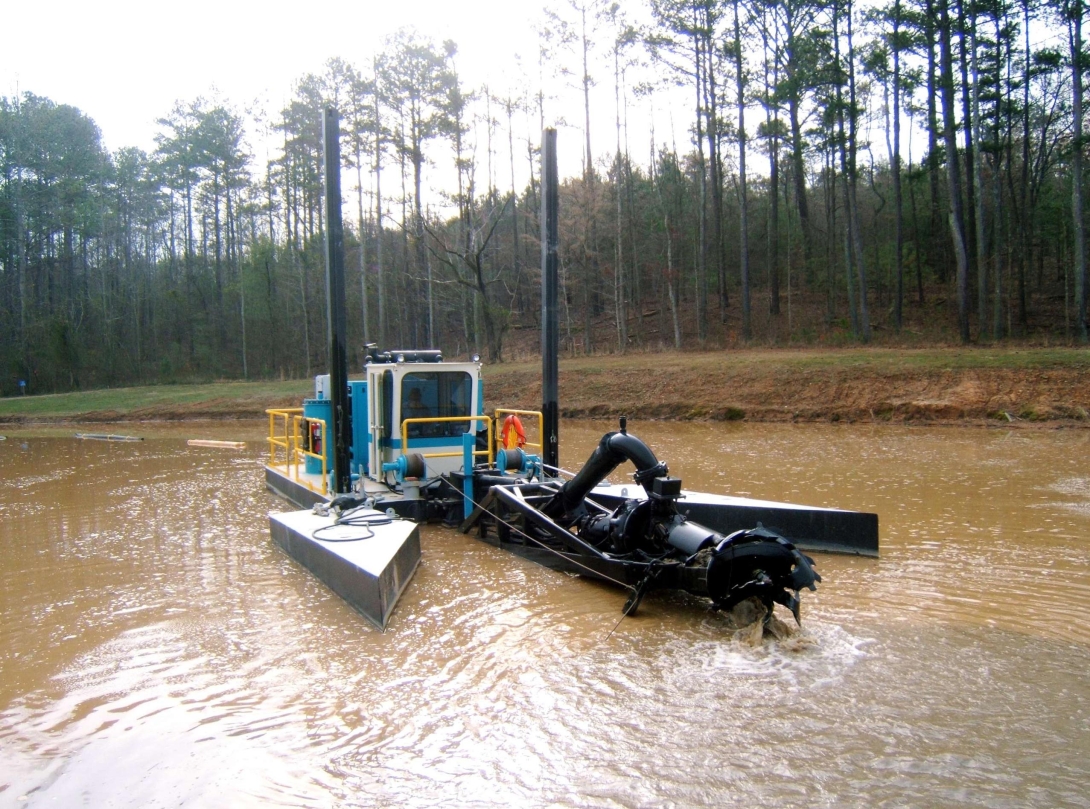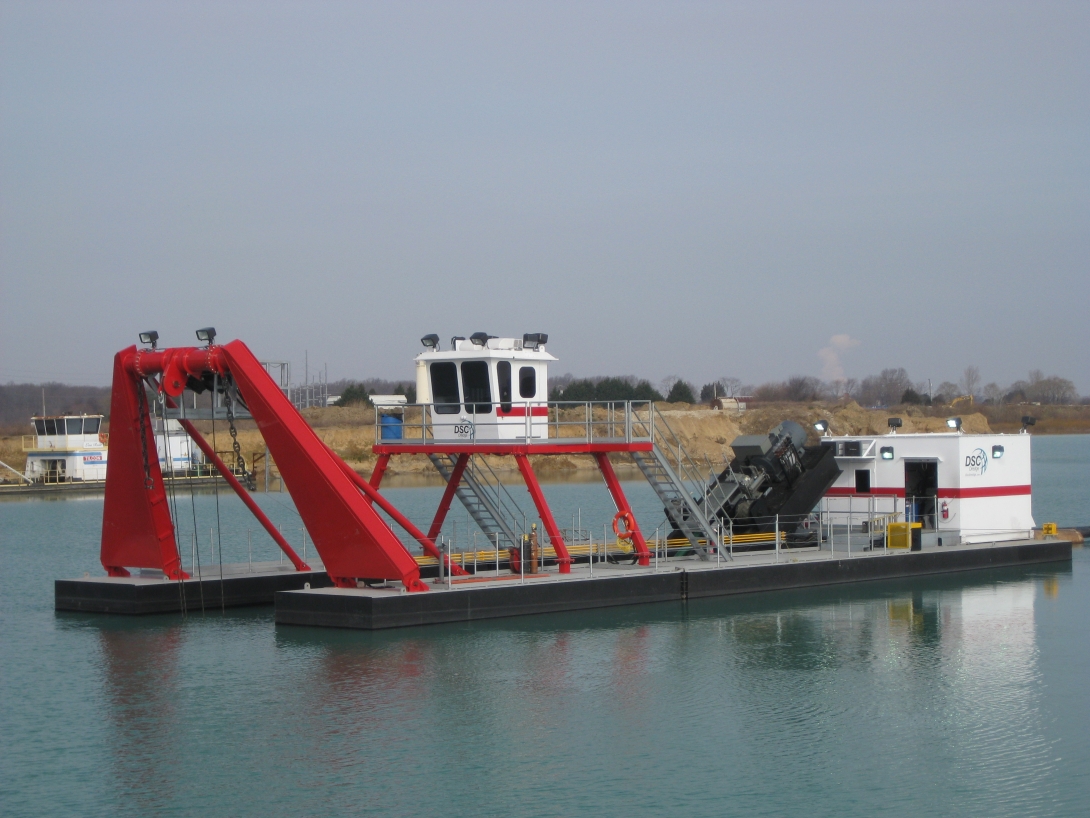Lake Wildwood was built in the late 1960s as a lake recreation complex for people living in the Chicago and north-central Illinois areas. The lake covers more than 220 acres and is filled by water runoff from the upland agricultural area. Today, Lake Wildwood is home for many permanent residents who are retired or who live in the area and commute to larger city areas
Like many other homeowner association lakes, the Lake Wildwood drainage area, in relation to the size of the lake, was too large. During heavy rains, the creek feeding the lake delivered enormous amounts of silt from the surrounding farmland, causing the lake to fill very quickly with silt. Rather than requiring dredging every 30 to 40 years, as some lakes do, many parts of Lake Wildwood became too shallow for boating, fishing and other lake recreational activities within 8 to 10 years after its construction.
In the early 1980s, the Association purchased an auger dredge to control the silt in numerous coves and at the upper end of the lake, where 93 percent of sediment settles first before moving farther into the lake. The major objective was to keep the upper end of the lake cleaned out, so that it becomes the settling area for the silt, and prevents migration into the main body.
In 2002, the Association became aware of a unique dredge manufactured by DSC that used no cables to operate and was equipped with an underwater dredge pump, which greatly increased solids concentrations, especially for finer silts. During this time, the existing auger dredge could not keep up with the incoming silt, and the cables were difficult to operate, while also posing a safety hazard to the property owners.
Lake Wildwood invested in a new 8-inch DSC Moray Class Swinging Ladder dredge. It was delivered in mid-summer 2003, and it immediately improved circumstances for the Association and for the lake’s boaters and swimmers. Previously, DSC engineers had performed a comprehensive sediment survey for the Association. The computer generated a silt program for the various size swinging ladder dredges (using no cables) and indicated that an 8-inch discharge swinging ladder dredge could outperform the existing auger dredge by a factor of 1.75 times. Not only was this performance improvement impressive to the Association, but also the ability to operate without the use of cables would result in a significant liability reduction for the Board of Directors.
“Our MORAY exceeds the production of the old dredge by a factor of two,” said Robert A. Phelps, General Manager of Lake Wildwood. “The sediment is being pumped through 8 inch ID HDPE pipeline, pumping a distance of 2,250 feet with a 30 foot elevation rise from the lake water level.”





